Blogs
Cleaning with less water
How new cleaning technology can help businesses be water-wise without compromising on hygiene.
In South Africa, images of people in the town of Graaff Reinet queuing to collect water from a local charity are visual reminders that climate change is impacting the availability of the planet’s most precious resource — water.
The multi-year drought affecting a string of small towns in the Eastern Cape and Northern Cape, South Africa is indicative of a global problem of water scarcity.
“Water scarcity is one of the ways in which we are experiencing the effects of changing weather patterns, so industries and businesses that consume large volumes of water need to innovate and implement sustainable practices to avoid being part of the problem,” says Emma Corder, Managing Director of Industroclean, a local manufacturer and distributor of cleaning products and machinery.
Researchers predict that global water demand is going to dramatically increase by 20 to 30% come 2050, mainly due to pressure from industrial and domestic sectors.
Almost every manufactured item on the market today uses water during some part of the production process, whether it be as an ingredient, or for cooling the product, or sanitation purposes.
“Options available in the chemicals manufacturing process, to avoid a situation where as much as 300 liters of potable water is used to flush out holding and bottling tanks, is ‘wash water’ treatment systems which are used to filter and recycle water inside a manufacturing plant,” Corder explains.
“Manufacturers can also avoid using water by relying on air transfers or gravity-based transfers to move items across the production line,” she adds.
But what can businesses and institutions that consume cleaning products on a large scale do to cut down on their own water usage?
Corder says that businesses should work on embedding their environmental policies into the organisation’s culture.
“The internalisation of water-saving principles will help drive the behavioral change needed for the long-term success of sustainable strategies,” she advises.
She explains that advances in cleaning technology have made it possible for us to clean hygienically without using large quantities of water.
For instance, healthcare institutions and other consumers with strict hygiene standards rely on the Masslinn range of textured wipes and floor mops because they don’t need much water and also limit the growth of bacteria that thrive in moist conditions.
“Using a flat, microfibre damp mop for spot mopping requires less water than using an outdated spaghetti mop across a large surface area,” says Corder.
“The disposable wipes are impregnated with an oil to ensure optimal pick-up of dust, while its honeycomb structure traps the dirt preventing it from whirling up and becoming airborne,” she adds. The product is a “use and dispose of” system that reduces the risk of cross-contamination.
For businesses to reduce their water usage and be truly sustainable, these strategies and techniques must be consistently applied.


